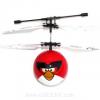- 4 replies
- 2,495 views
- Add Reply
- 17 replies
- 4,157 views
- Add Reply
- 2 replies
- 1,637 views
- Add Reply
- 2 replies
- 1,746 views
- Add Reply
- 0 replies
- 1,566 views
- Add Reply
ArcGIS Desktop Professional Certification Exam
By sss4sss,
Hi
I am thinking of taking the ArcGIS Desktop Professional Certification Exam in the next few months time. I've never taken such an exam before but do not want to take the Basic and Associate certification and jump directly to the Professional.
Has anyone taken such an exam? How would you advise for or against taking it (it costs 225 USD)? And do you have any advice on exam preparation?
Thanks,
sss4sss
SuperMap Review
By seanpierrce,
In August, 2016, Microsoft announced transferring a powerful developing tool – Powershell to the systems like Linux. This is not the first time Microsoft leaning on Linux. In the beginning of this year, Microsoft published SQL Server for Linux. In March, Microsoft announced that it will publish database management software – Linux SQL Server. Just as Satya Nadella, CEO of Microsoft, said, ‘Microsoft loves Linux.’
B/S (Brower/Server) has become the new trend for software mode. SuperMap GIS ch
Displaying the metadata of “published” layers in the Web applications
By Fatin Rimawi,
Hello everyone,
I just want to display my metadata that i created on GIS like a web service.
Despite the fact that we configure the metadata on ArcGIS Server level, the Geocortex fails to show the metadata on published layer. What might be the issue here?
Best,
Fatin
An efficient point cloud processing software - LiDAR360
By DandelionT,
Hello everyone, I just want to share a new software of point cloud processing: LiDAR360.
This software has the ability to visualize large point cloud data and automatically align flight strips, classify points and generate spatial products.
Main Functions:
Strips alignment
Automatic and semi-automatic point cloud classification(ground, buildings, vegetation, powerline, tower and so on)
Forest analysis(including forest metrics calculation, tree segmentation)
Powerline
OSM real time modification

By intertronic,
Hi,
here a link where you can get some information about OSM, and an animation with the last features modified or created by users..
http://osmlab.github.io/show-me-the-way/
-
Forum Statistics
8.7k
Total Topics43.4k
Total Posts




